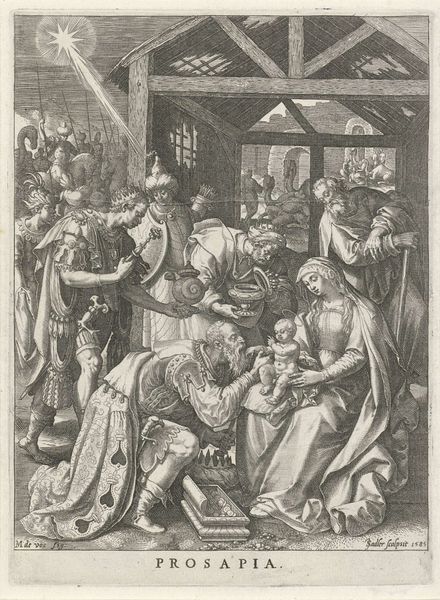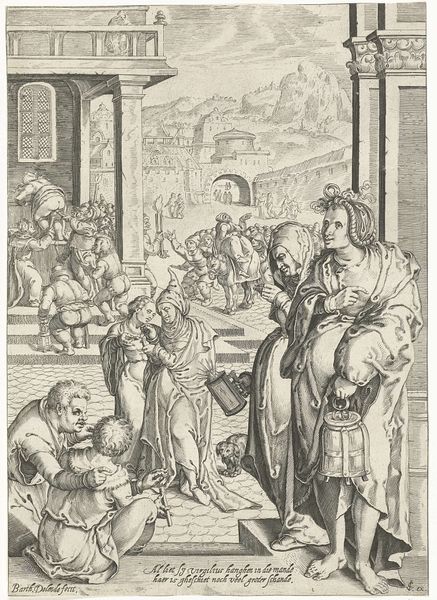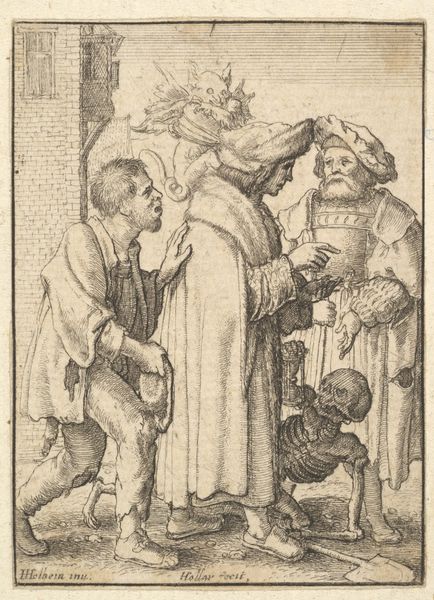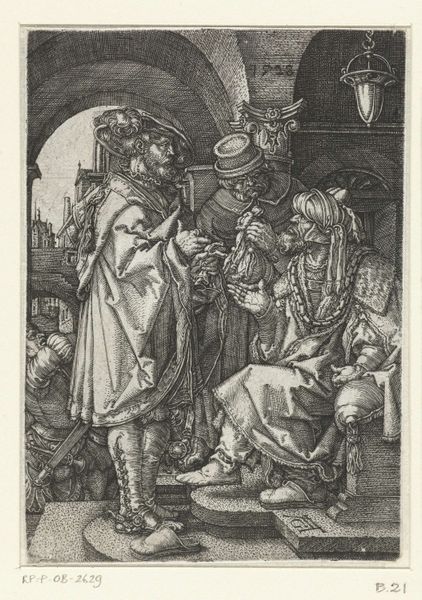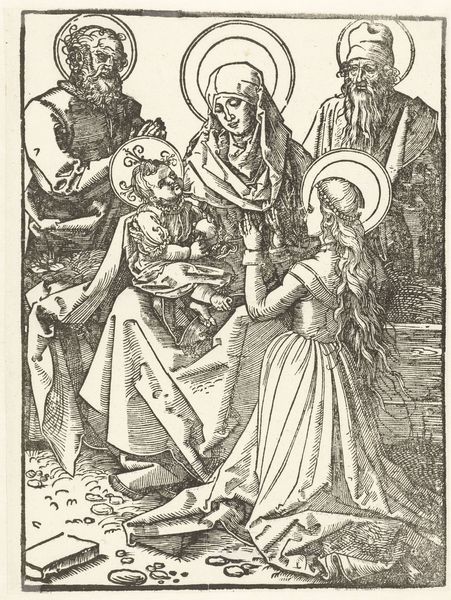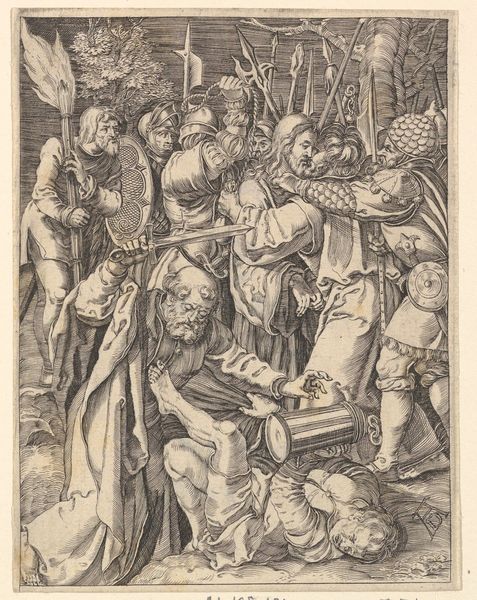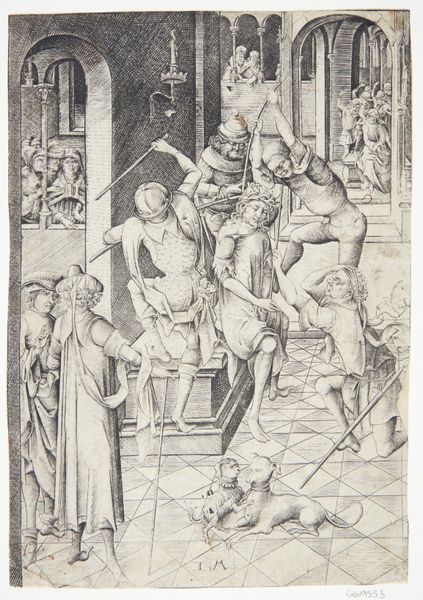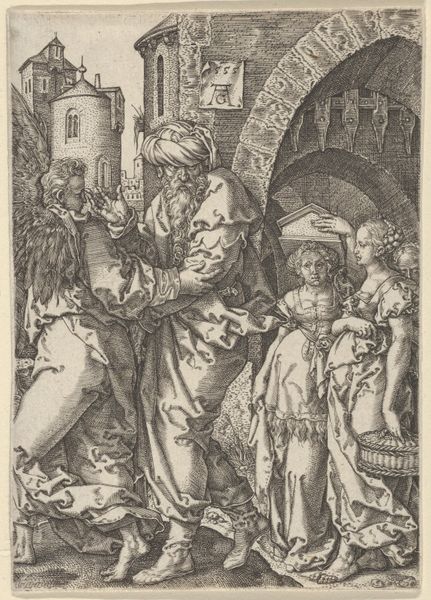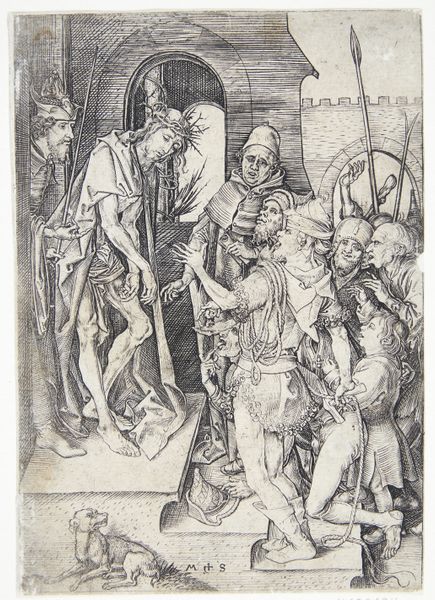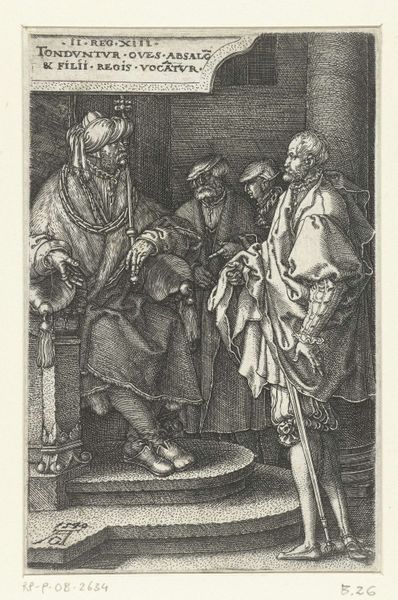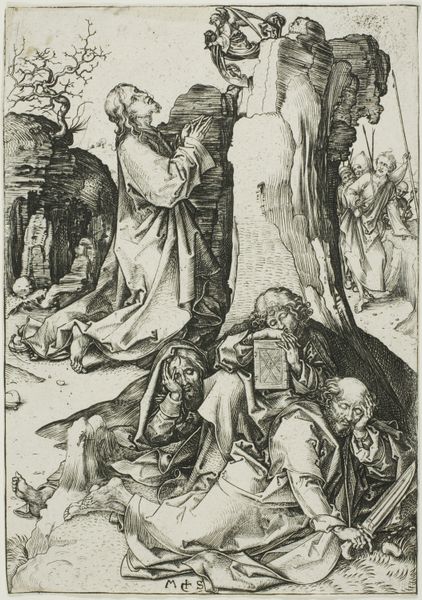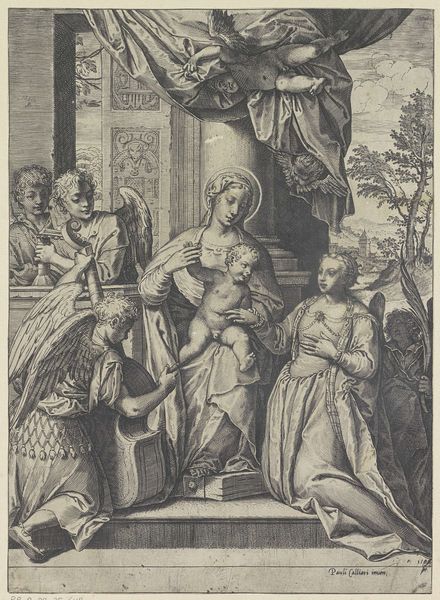
De verloren zoon ontvangt zijn erfdeel en gaat op reis 1581 - 1656
0:00
0:00
nicolaesdebruyn
Rijksmuseum
print, engraving
#
narrative-art
#
baroque
# print
#
figuration
#
genre-painting
#
history-painting
#
engraving
Dimensions: height 279 mm, width 208 mm
Copyright: Rijks Museum: Open Domain
Curator: This image immediately strikes me as rather ominous despite the celebratory feel. There’s a sense of impending doom almost, hanging over this seemingly joyous farewell. Editor: I agree, there is definitely some unease there. Let’s set the scene. We're looking at an engraving, “The Prodigal Son Receiving his Inheritance and Setting off on his Travels," crafted by Nicolaes de Bruyn. It's housed in the Rijksmuseum, and it would have been created sometime between 1581 and 1656. It portrays a key moment in the parable of the prodigal son. Curator: What's interesting to me is the central focus on power dynamics inherent in the original telling. The son, elevated literally on horseback, looking down at his father, is seizing control, demanding his due and rejecting tradition, right? Editor: Exactly! It speaks volumes about societal shifts during that period. De Bruyn subtly critiques patriarchal structures through this seemingly simple narrative. By presenting this young man’s act of rebellion—demanding his inheritance—the artwork can open up dialogues around individualism and familial responsibility within a shifting economic climate. The father’s role here is vital too; he appears almost defeated. Curator: And there are all these faces pressed in behind the father, creating an overwhelming sensation. This family unit seemingly losing control and powerless to do anything other than observe. You know, for audiences who might be dealing with similar themes, perhaps struggling against the pressures and constrictions of their own families...this engraving visualises this internal tension between desire, individual versus societal expectation. Editor: That's such an important point. But beyond its thematic weight, let's consider De Bruyn's technical skill here. Look at the density of lines. Through these stark tonal contrasts he communicates complex emotions using such simplicity. Consider how such engravings are used. Curator: Indeed. Art produced on paper would be seen as democratizing, which goes in tandem with the topic depicted. As it gives broader access, allowing wider conversations to transpire regarding themes depicted by De Bruyn. It’s not confined to the elite, but reaches a much broader, accessible viewership. Editor: Very true. Overall, what fascinates me about this piece is its historical accuracy mixed with an undercurrent of tension regarding power, duty, and how this still speaks volumes to society and viewers even today. Curator: And it prompts us to re-examine established power systems, question assumptions, and find beauty in challenging those rigid structures that contain us.
Comments
No comments
Be the first to comment and join the conversation on the ultimate creative platform.
